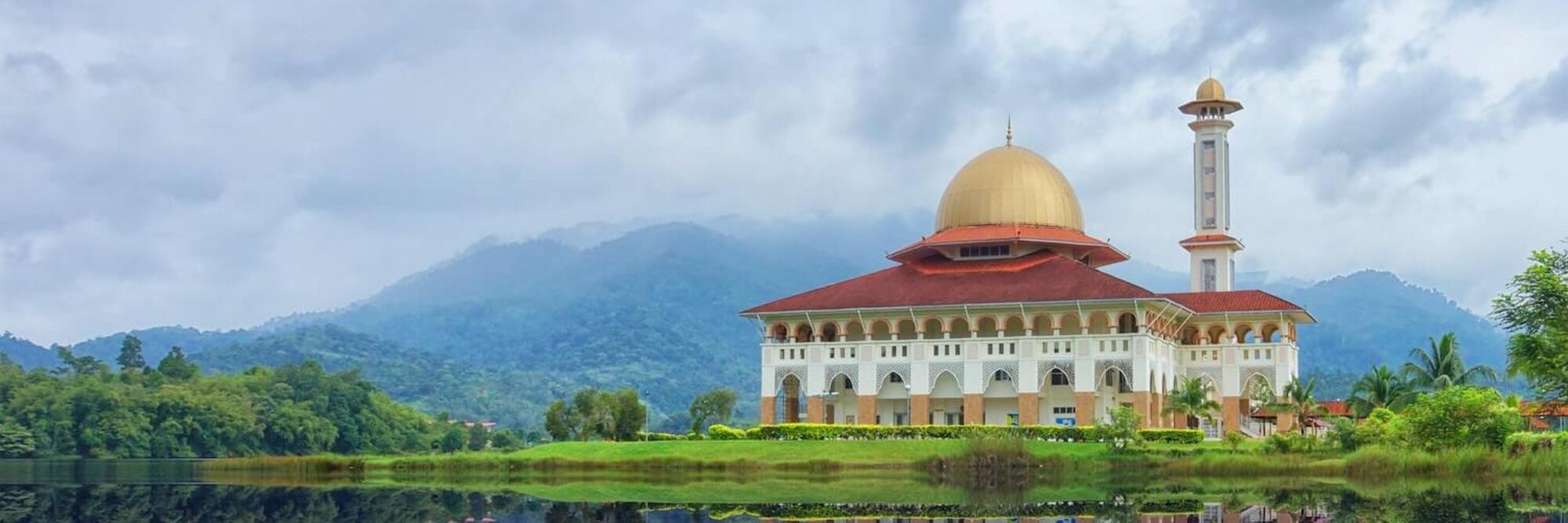In this article, Expat Arrivals expert Ann Kaufman shares her experiences of having a baby in Malaysia. This fascinating piece, which is sure to assuage any fears that expecting expats might be feeling, has Ann tell us about how she was able to cope with the challenges of having a baby in a foreign country with relative ease and aplomb.
Fans of her writing should also check out her blog, The Gravy Train , which contains mouth-watering recipes and compelling travel accounts.
It finally, finally dawned on me that I was about to give birth in a foreign country, far, far away from my family and friends, when I stepped into the room in the hospital’s labour ward. My contractions were already five minutes apart, and a cheery nurse handed me two folded, neatly-pressed sheets the color of Pepto-Bismol.
“For you to wear,” she said and gestured me towards the bathroom to change.
I waddled carefully over to the bathroom to change, and once inside, I unfurled both sheets. One was a long kimono-style shirt with two ties on the front and inside of the shirt, and the other was a five-foot-long sheet that had been sewn into a giant tube of fabric.
I tugged the shirt on and wrapped it around myself, tying the ties on the inside to the ones on the front of the shirt. The shirt was long, but not long enough. It hit around the upper thigh and formed a sort of uglier cotton version of Britney Spear’s miniskirt in the “Hit Me Baby One More Time” video. Surely this wasn’t the only thing I was supposed to wear! I picked up the tube of fabric. Folded, it wasn’t wide enough to wrap around my waist, and when I stepped into the tube, it slid down my waist and pooled around my ankles. I opened the door to the bathroom and peeked outside. My husband shot out of his chair like he’d just heard gunfire. The nurse was nowhere to be seen. “Um…can you get the nurse? I don’t know how to wear these things,” I said, gesturing at the puddle of pink sheets gathered around me.
Thankfully, the nurse reappeared, and I held up the tube of fabric inquisitively. “Sarong,” she said. “It’s your sarong.”
I wasn’t aware that sarongs were standard issue hospital wear here in Kuala Lumpur, where I was about to deliver my first baby. But as I stepped once again into the giant fabric tube and the nurse gathered it around my belly and folded it once, then again, I thought – very momentarily – about how different my birth experience would be if we’d never left our home in Washington, DC to move to Malaysia in 2009.
My husband and I moved to Kuala Lumpur as newlyweds, and we’d talked about starting a family almost as soon as we arrived. Once we were settled into our new home, we started researching the quality of medical care in Kuala Lumpur and were delighted when we found three private hospitals – Gleneagles, Prince Court and Pantai – where other expats like ourselves had had positive experiences.
Prince Court, in particular, had brand-new facilities, having just been constructed in 2007, and we were referred to Dr. Paul Tay, a Malaysian OB-GYN who was educated and trained in the UK. The hospital was also located less than a 5-minute drive away from our house.
It wasn’t long after we’d reached a comfort level with the quality of healthcare here that we discovered we were pregnant, so we visited Dr. Tay and immediately liked him. We liked that he promised that, to the best of his ability, he’d be present at the birth since he’d calculated my due date and wasn’t planning on travelling during that time. We liked that he administered the ultrasounds himself, right in his office, so we received his analysis firsthand. We also liked that his medical bills were pretty affordable – RM 90 (about USD 30) for the office visit and around RM 90 for the ultrasounds. We liked that he administered the ultrasounds when he felt they were necessary, not like in the US, where routine ultrasounds are typically administered only in the 12th and 20th weeks. This practice was especially helpful in confirming the baby’s position in the weeks before delivery.
The level of attention and care I received from Dr. Tay and the other medical professionals at Prince Court, coupled with the fact that I took time off from my career to move to Malaysia for my husband’s job, made me feel lucky to be pregnant in Kuala Lumpur.
My husband and I often speculated during my pregnancy about what it would have been like for us to have our first baby in the US – juggling two careers and doctor’s appointments made at times that weren’t necessarily convenient for both of us. Not only was my schedule very flexible, but I was often able to schedule appointments with Dr. Tay with only a day or two’s advance notice.
Another huge perk of having our baby overseas is the availability of affordable help in Malaysia. When my husband and I found out we were pregnant, we hired a part-time housekeeper to help us out with the laundry and housework, and we found a great babysitter who comes to help us out once a week. We would never be able to afford such luxuries back home in the United States, and we’re so grateful to these ladies for their help. They really have made the transition into new parenthood much easier.
That’s not to say, however, that there weren’t major downsides to being pregnant in Kuala Lumpur, too. I missed sharing my pregnancy with my friends and family back home, and nothing underscored that void more than the day my son was born.
The time difference meant that our families were asleep when I went into labour, and when they woke up the next morning, Bennett had already arrived. Our dear Kuala Lumpur friends did visit us in the hospital, which somewhat eased our homesickness, but our joy was tinged with a little bit of sadness, knowing that we were missing out on sharing this once-in-lifetime experience with our family. Sure, we had Skype, e-mail and the telephone, but with every chat or message, I could sense my family’s longing to be there all the same. I know because I felt the same way.
Also my husband and I also discussed well in advance of my delivery whether or not we were comfortable having our baby here in Kuala Lumpur if any complications arose before my due date. We decided that we’d request a medical evacuation through my husband’s employer to Singapore or Taipei if Dr Tay identified any potential issues in advance of my delivery date (and while I was still able to fly). Luckily, I had a normal, event-free delivery, so the issue never arose, but I do think that preparing contingency plans for medical care when you’re living abroad is never a bad idea.
My baby Bennett is now six months old, and every day of parenthood so far has been a blast (yes, even the sleep-deprived early days!). I feel so grateful that my husband and I were able to start a family in Kuala Lumpur, especially because I’ve been able to step back from my career and really enjoy my pregnancy and my baby’s first year.



